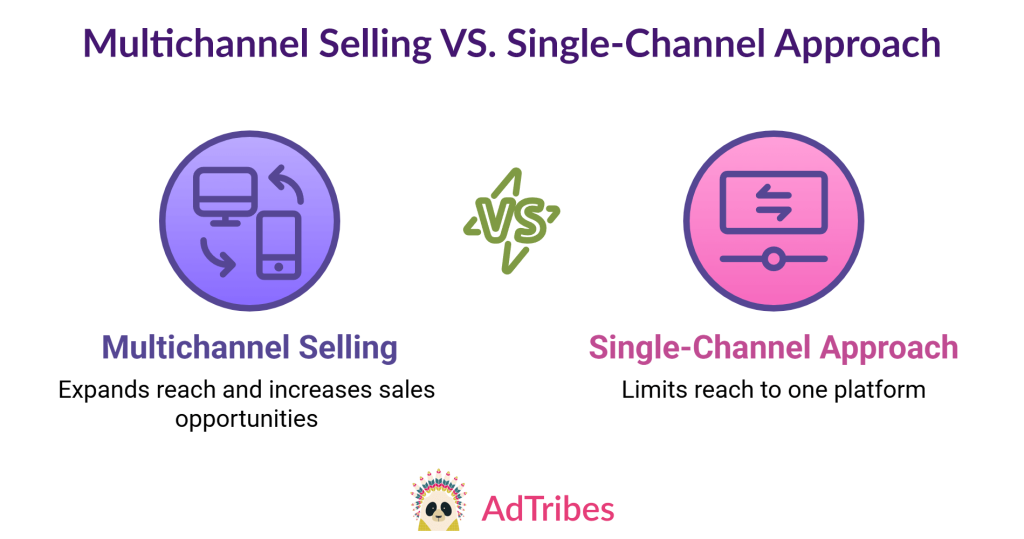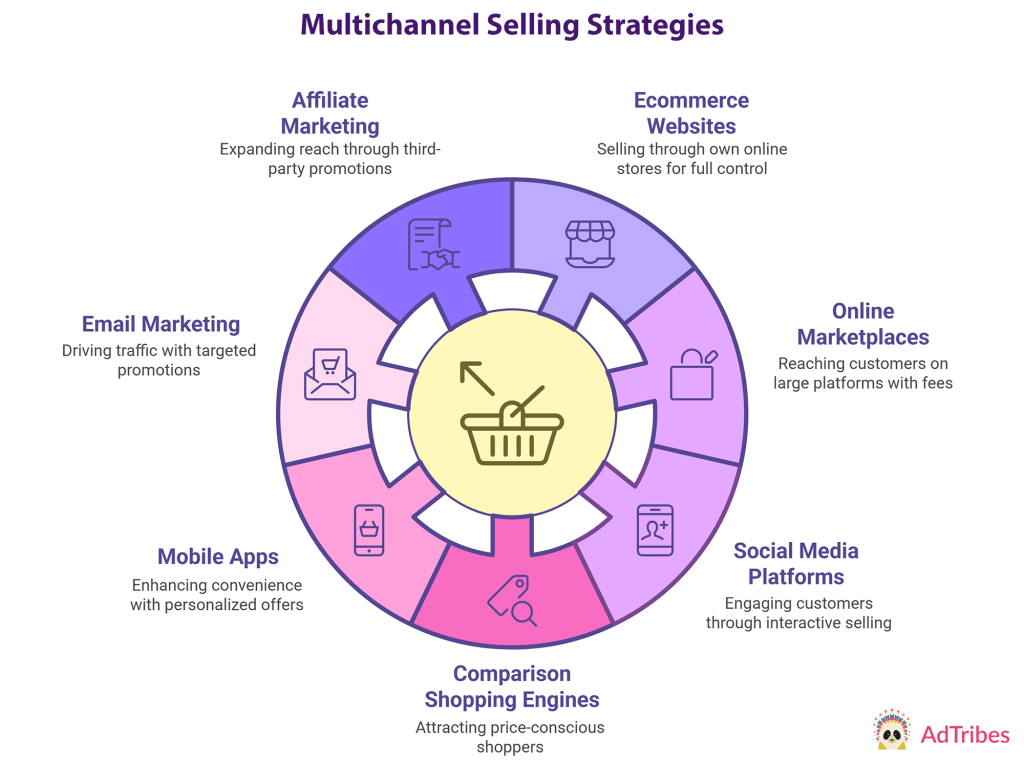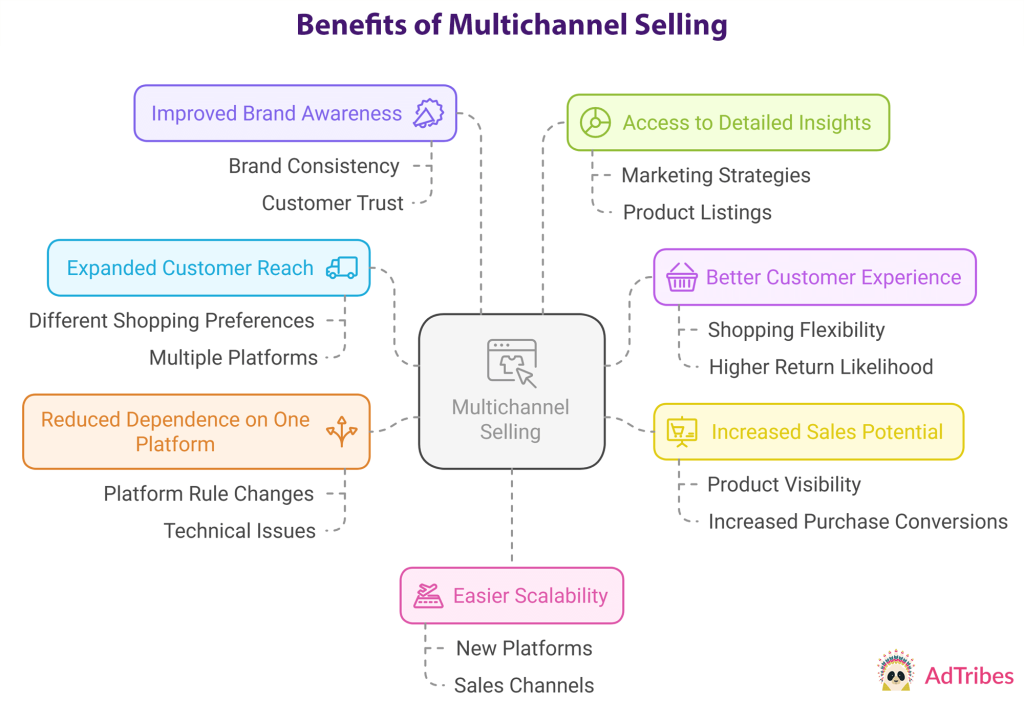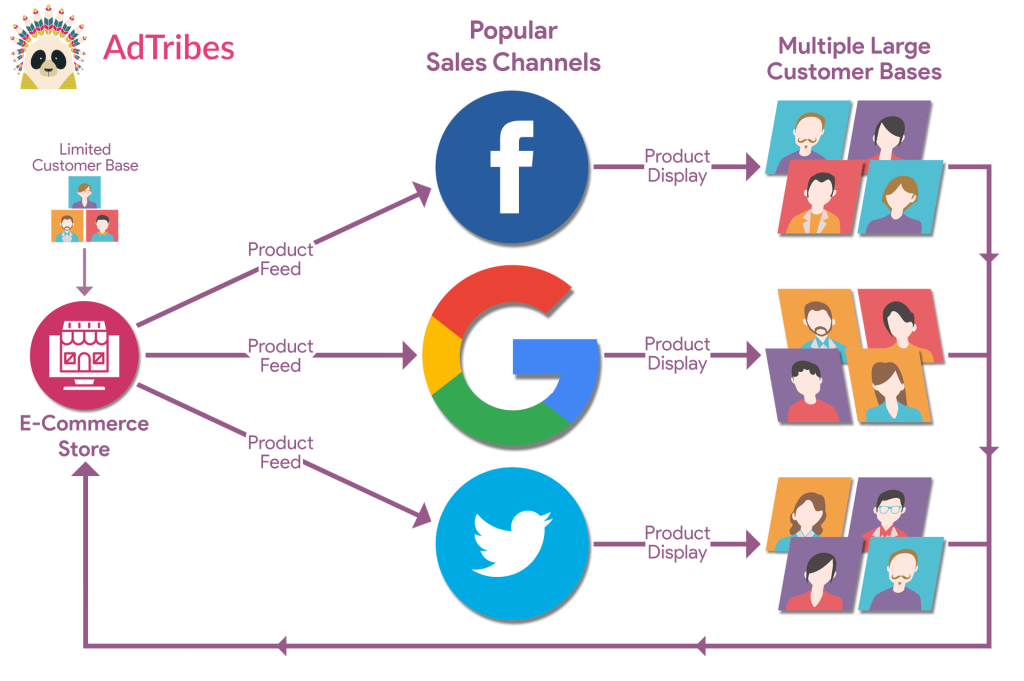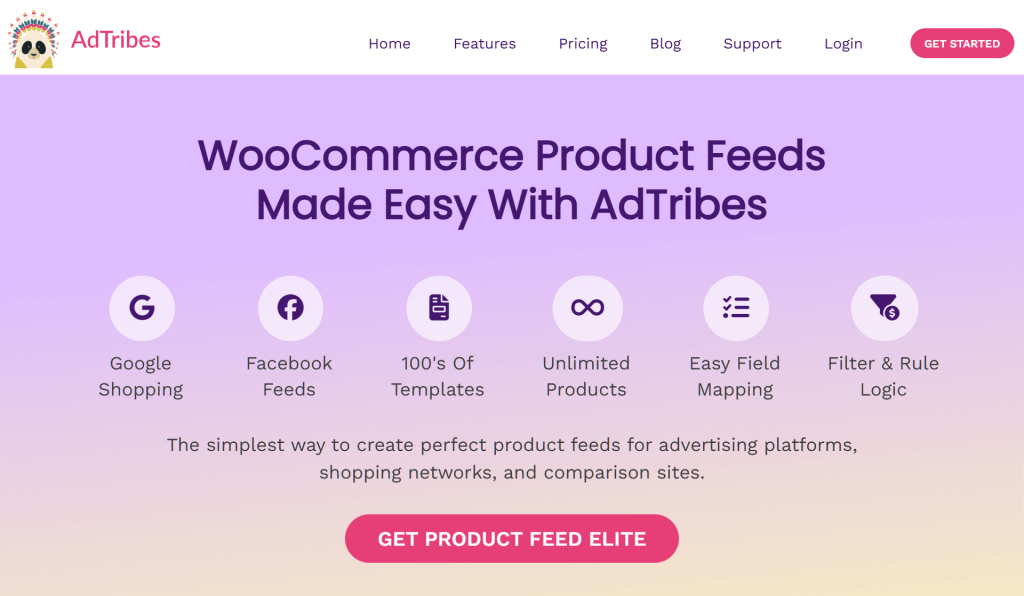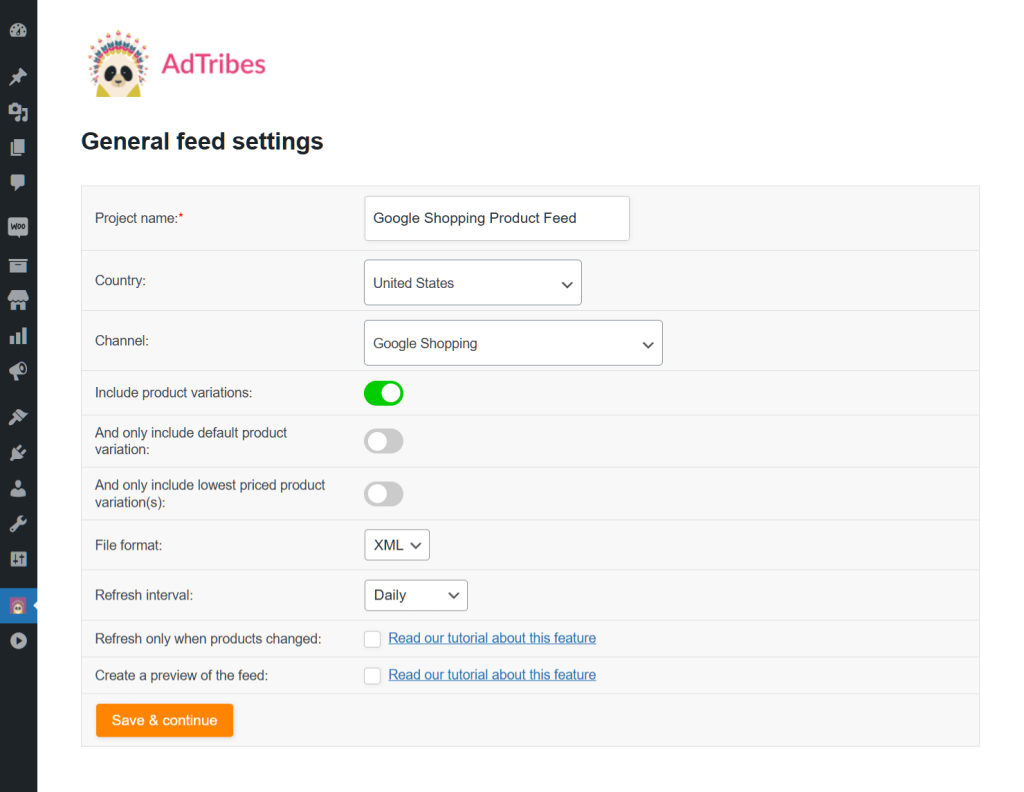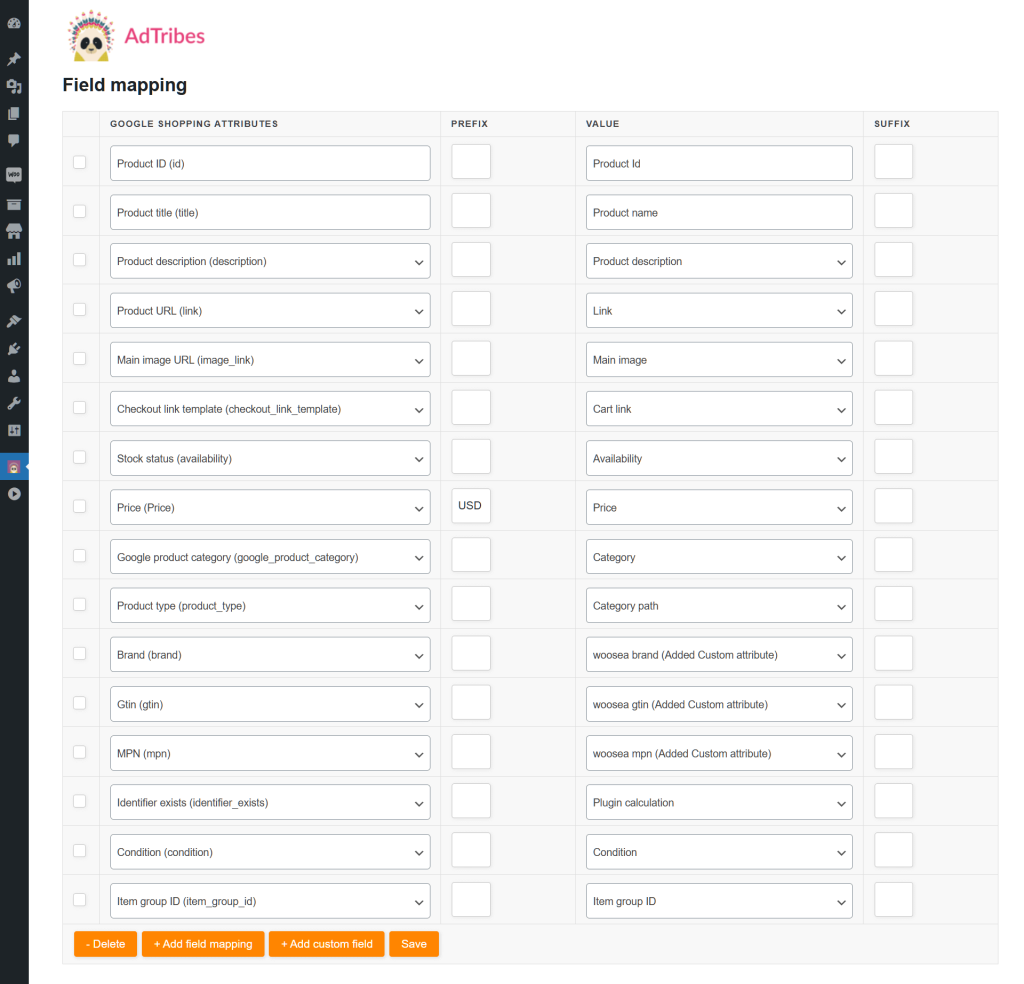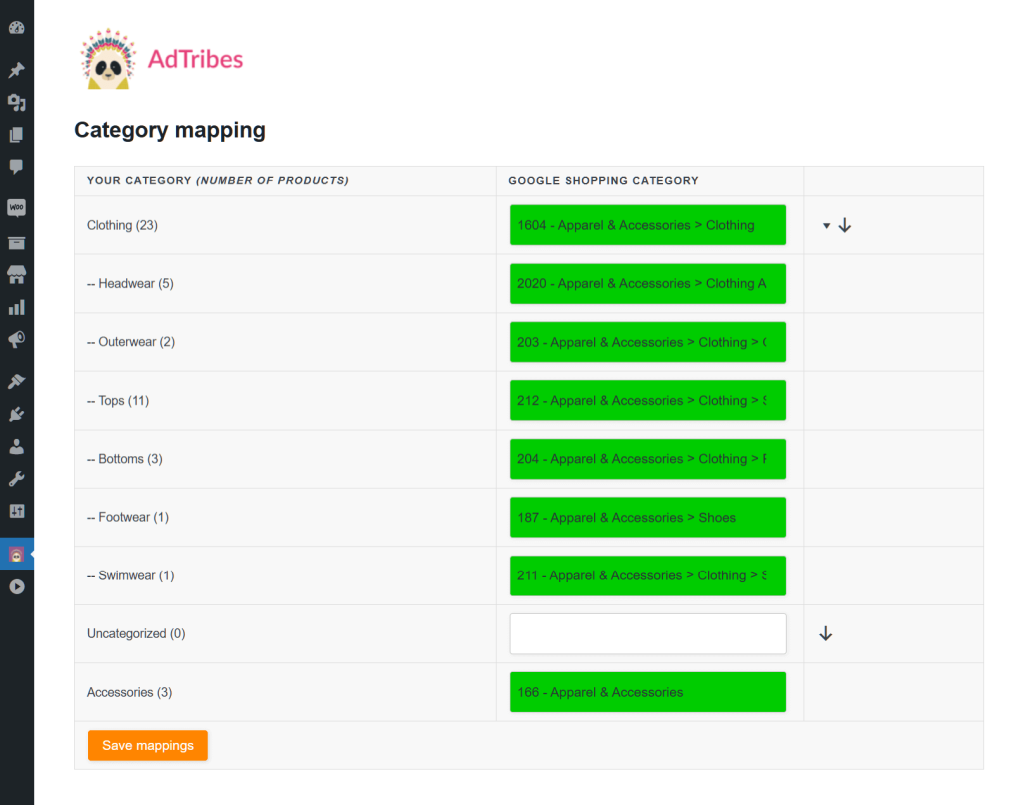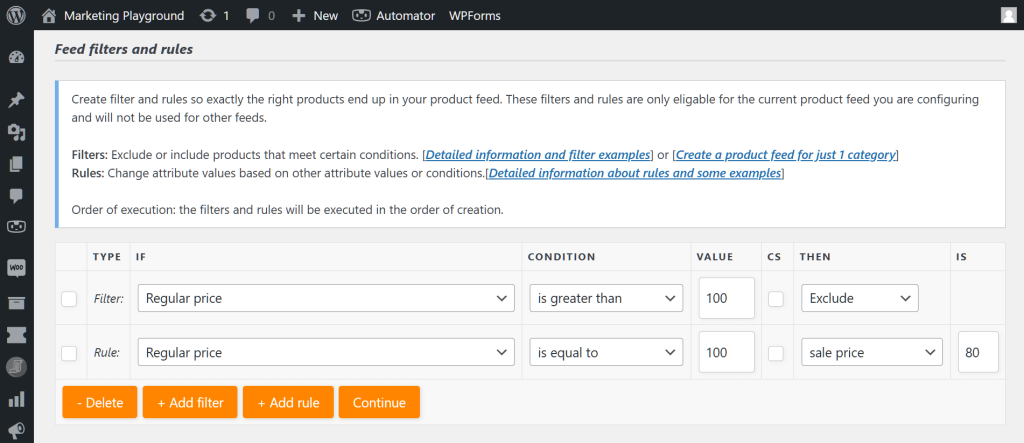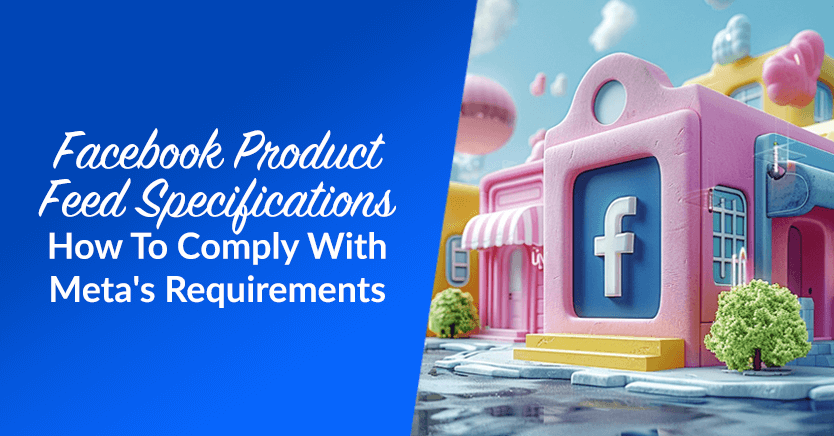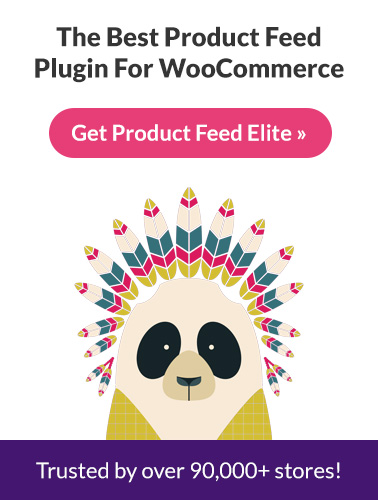
Selling online isn’t just about having a great website anymore. Customers shop in different places: on price comparison sites such as Google Shopping, social media platforms like Facebook, and more. So, how can you promote your products across multiple platforms? Two words: multichannel selling.
Multichannel selling involves listing products across various channels to reach more customers and boost sales. Shoppers expect convenience, wanting to see products wherever they browse, from Instagram to Bing. Thus, if your business isn’t present on multiple platforms, you’re missing out.
Today, we’ll dive into multichannel selling and how it can enhance your ecommerce business. In addition, we’ll explore powerful tools known as product feeds, which are key to simplifying and enhancing the effectiveness of your multichannel sales strategy.
So let’s get right into it!
- I. What Is Multichannel Selling?
- II. Ecommere And Multichannel Selling
- III. 7 Major Benefits Of Multichannel Selling
- IV. How Product Feeds Simplify Multichannel Selling
- V. Best Practices For Multichannel Selling Success
- Conclusion
I. What Is Multichannel Selling?
Multichannel selling means listing and selling your products on more than one platform. Instead of just having your products on your website, you also put them on other places where people shop, like Google Shopping, Facebook, and Bing Shopping. This way, you’re able to reach different types of customers wherever they’re online.
In other words, with multichannel selling, you showcase your products across multiple platforms, giving you more chances for people to find them and purchase them.
In contrast, a single-channel approach means selling products only on one platform, like just your website or only on Instagram. While this can work for some businesses, it limits your reach. After all, you’re only reaching customers who specifically go to that one site, which could be a small group.
Some of the biggest platforms for multichannel marketing and selling include:
- Google Shopping: A great way to reach people actively searching for products like yours.
- Facebook: You can sell directly through Facebook Marketplace or even show ads to a large, targeted audience.
- Wish: A popular marketplace known for budget-friendly shopping, where millions of shoppers discover and purchase a wide variety of products.
The more platforms you use, the greater the chance that potential customers will discover and purchase your products.
II. Ecommere And Multichannel Selling
Within the realm of online selling, multichannel selling specifically focuses on digital platforms to reach customers. There are several strategies you can use to diversify and expand your reach.
1. Ecommerce websites
Selling products through your own online store (like WooCommerce) is one of the most common ways to sell online. This gives you full control over your branding, pricing, and customer experience.
2. Online marketplaces
Selling on big online platforms like Wish or Fruugo is another popular option. While these sites help you reach many customers, take note that they often charge fees and limit how you can brand your store.
3. Social media platforms
Platforms like Instagram, Facebook, and TikTok now allow businesses to sell directly from their pages. Thus, they allow customers to interact with your offerings in a fun and engaging manner. It’s no surprise social media selling is booming.
In fact:
- 87% of consumers think social media influences their purchasing decisions.
- 66% of customers make a purchase after seeing social media posts from others.
- Social selling creates 45% more opportunities compared to traditional sales methods.
- 78% of salespeople who use social selling surpass their colleagues in performance.
- Businesses that use social selling strategies often experience deals that are up to 48% larger on average.
4. Comparison shopping engines
Comparison shopping engines (CSEs) like Google Shopping, PriceGrabber, and Shopzilla let customers compare different retailers’ offerings and prices.
Listing your products on these platforms can help you reach shoppers who are actively looking to make a purchase. As a result, you make it easier for them to find your products.
5. Mobile apps
Many businesses now sell directly through their own mobile apps or third-party apps. After all, mobile apps provide convenience for customers through notifications, personalized offers, and easy checkout processes. Thus, they can be a powerful way to engage loyal shoppers.
6. Email marketing
While email isn’t typically thought of as a selling platform, it’s a great way to drive traffic to your ecommerce store. You can send product updates, promotions, and personalized offers that encourage subscribers to purchase through your website or another platform.
7. Affiliate marketing
Through affiliate marketing, you can have third-party websites or influencers promote your products and earn commissions on sales. Consequently, this helps broaden your reach by tapping into others’ audiences to promote your offerings.
When you use a mix of these online selling strategies, you can reach more customers across different digital channels, boosting visibility and sales.
III. 7 Major Benefits Of Multichannel Selling
Multichannel selling can take your online business to the next level. With that in mind, let’s examine the 7 key benefits this powerful strategy offers!
1. Expanded customer reach
When you sell on more than one platform, you can reach a wider audience. Different people shop in different places, so you want to be where they’re looking.
For example, some customers may only shop on Wish, while others prefer browsing on Facebook or searching through Google Shopping. Therefore, when you list your products across multiple channels, you make it easier for customers to find and buy from you.
2. Better customer experience
What happens when you’re present on multiple channels? Basically, you give customers more options to shop in the way that’s most convenient for them, whether that’s browsing on social media, searching online, or visiting a comparison shopping engine. This flexibility enhances their shopping experience and makes them more likely to return.
3. Increased sales potential
The more places your products appear, the more likely they are to be seen by customers.
More visibility means more chances to make a sale. When your products show up on popular platforms, you’re not just depending on one channel for sales; you’re casting a wider net, which increases your chances of turning views into actual purchases.
4. Reduced dependence on one platform
If you rely on only one platform to make sales, you’re putting all your eggs in one basket. So what happens if that platform changes its rules or has technical issues? You could lose out on sales.
When you diversify and sell on various platforms, however, you can reduce the risk of relying too heavily on just one. After all, if one platform experiences a problem, you have others to fall back on.
5. Improved brand awareness
When you sell on multiple channels, you can get your brand name in front of more people. Whether it’s through Facebook, Google Shopping, or TikTok, your brand stays consistent across all these channels.
The more people see your brand, the more familiar they become with it. This increased exposure helps build trust with customers, making them more likely to buy from you in the future.
6. Access to detailed insights
Selling across various channels provides valuable data and insights about customer behavior on each platform. This information can help you adjust your marketing strategies, improve your product listings, and optimize your inventory management.
7. Easier scalability
As your business grows, multichannel selling allows you to expand without needing to rebuild your sales process each time. You can add new platforms or sales channels easily, reaching even more potential customers without a complete overhaul of your systems.
IV. How Product Feeds Simplify Multichannel Selling
Product feeds help overcome the challenges of multichannel selling. In other words, it makes the strategy more effective and easier to manage.
However, to understand how product feeds accomplish this, we must first understand what these tools are.
1. What are product feeds?
Product feeds are files that contain all the information about your products, like names, descriptions, prices, images, and more. When submitted to various sales channels like Google Shopping and Facebook, these files help showcase your products on their platforms. Thus, they help enhance your product reach, visibility, and sales.
2. Why are product feeds crucial for your multichannel strategy?
Because product feeds are essential for expanding online sales across multiple channels, they’re a key part of the multi-channel selling model. Here’s why:
i. Consistency across channels
Product feeds help ensure your product information stays consistent across all your sales channels. Whether you’re selling on Google Shopping, TikTok, or Facebook, having the same information displayed everywhere builds trust with customers.
Furthermore, feeds reduce confusion, making it easier for buyers to know exactly what they’re getting, no matter where they shop.
ii. Centralized management
With product feeds, you can easily manage your product listings in one place. Instead of having to log into every platform and make updates separately, you simply update the feed, and it automatically syncs across all your sales channels. Basically, this simplifies online store and channel management, saving you time and effort.
iii. Automation
One of the key benefits product feeds provide is automation.
When you update your feed, the changes happen in real time. This means that if you change a product price, add a new item, or update your inventory, the feed automatically pushes these changes to every platform you sell on.
In other words, you don’t have to log in and update each channel individually. For one thing, this saves you time. For another, it ensures that your listings are accurate across all platforms, reducing the chances of mistakes or outdated info.
3. How do you create product feeds?
You can create product feeds using a product feed manager.
Here’s a great example: AdTribes Product Feed. This top-rated WooCommerce plugin helps you manage your feeds easily. Therefore, it makes it easier to sync your listings with popular channels like Google Shopping, Facebook, and more.
With AdTribes, you can also automate updates, customize how your products appear, and even optimize your feeds to get the best results on each platform. By using a tool like this, you’re able to save time and focus more on growing your business instead of constantly managing product listings.
AdTribes only requires five simple steps for you to generate a product feed:
Step 1: General feed settings
First, you have to identify the sales channel and target region for which you’re creating the feed.
Additionally, you can include product variations, select the feed’s file format, and set the frequency for automatic feed updates.
Step 2: Field mapping
The second step is all about mapping fields. Basically, this means ensuring your WooCommerce product data aligns with your selected channel’s fields.
To save you time and effort, AdTribes automatically fills in most fields, allowing you to move on to the next step without a headache.
Step 3: Category mapping
Next, you’ll have to map categories. This involves aligning your WooCommerce categories with those of your preferred channel.
To map categories, type at least 4 characters (including spaces) in each field in the right column. The plugin will then suggest categories for you to choose from. Just select the ones that match the categories in the left column.
Step 4: Filters and rules
The fourth step is optional. It lets you modify your product data using highly customizable product filters and rules. These take the form of if-then statements:
Making changes to your product data allows you to meet the specific requirements for your campaign.
For example, what if you don’t want a sales channel to showcase products priced over $100? Then, as shown in the image above, simply create a filter that says, “If the regular price is greater than $100, exclude the product.”
What if you want products priced at $100 to have a sale price of $80? Then create a rule that says, “If the regular price is $100, set the sale price to $80.”
Step 5: Google Analytics settings
Finally, you can choose to track your campaign’s performance by enabling Google Analytics.
Performance tracking is incredibly valuable. After all, knowing how well your products are performing can guide your strategy decisions. For example, it can help you identify popular products, allowing you to adjust your feed and potentially boost your profits.
So, what happens after you’ve completed all the steps above? Basically, all that’s left to do is generate and download the feed, then upload it to your selected sales channel.
Would you like to know how to create product feeds for your multichannel selling strategy? Then check out our complete guide:
What Is A Product Feed And How Do You Create One? (Ultimate Guide)
V. Best Practices For Multichannel Selling Success
To succeed in multichannel ecommerce, you need to focus on key strategies that will help your products stand out, stay consistent, and keep customers happy across all platforms.
1. Optimize product data for each platform
Each platform has its own rules for what product information it needs. Thus, make sure your product details are set up the right way for each platform you sell on.
For example, Google Shopping might need certain IDs, while Face needs extra product details. Customizing your product data for each platform helps you get found by the right shoppers.
Would you like a more comprehensive guide on how to meet Google Shopping requirements? Then read the following article:
Google Shopping Feed Requirements: How To Ensure Your Products Get Featured
For Facebook and Instagram requirements, head over to the following guide:
Facebook Product Feed Specifications: How To Comply With Meta’s Requirements
2. Use high-quality images and clear descriptions
Good pictures and clear descriptions can make a big difference in getting people to buy.
Therefore, use sharp, high-quality photos that show your product from different angles. Also, write descriptions that are simple and show what makes your product special. The better your images and descriptions, the more likely someone will click to buy.
3. Keep pricing and inventory the same across channels
It’s important for your prices and stock levels to match everywhere you sell. If your product is sold out on one platform but still listed on others, customers may get upset.
The same goes for prices; if your price is different, it might confuse customers. Thus, ensure your product feed updates automatically to keep everything the same across all platforms.
4. Categorize products correctly for each platform
Different platforms have different ways of organizing products. Therefore, make sure your product feed includes the right category for each channel. This helps your products appear in the correct searches and makes it easier for customers to find what they’re looking for.
Take the time to match the platform’s category requirements to your product’s details.
5. Watch your analytics and make changes
Once your products are listed, track how well they’re doing.
Use data tools to see how many people are visiting your listings, how many are buying, and which platforms are working best. If something isn’t working, change it.
Check your numbers regularly and make improvements to keep your sales growing.
Conclusion
Multichannel selling is a powerful way to grow your online business by reaching customers wherever they shop. After all, when you expand your presence on platforms like Google Shopping, social media, and comparison engines, you can boost visibility, improve customer experiences, and increase sales.
With tools like product feeds, managing and syncing your listings across multiple channels becomes easier and more efficient. Therefore, whether you’re just getting started or looking to scale, adopting the multichannel approach and using the right tools can set your business up for success in the competitive ecommerce world.
To recap, this article examined the following key concepts:
- What is multichannel selling
- Ecommerce and multichannel selling
- 7 major benefits of multichannel selling
- How product feeds simplify multichannel selling
- Best practices for multichannel selling success
So, are you eager to start multichannel selling? Let us know in the comments! And if you’d like to create your own product feeds, check out this free trial of AdTribes.
